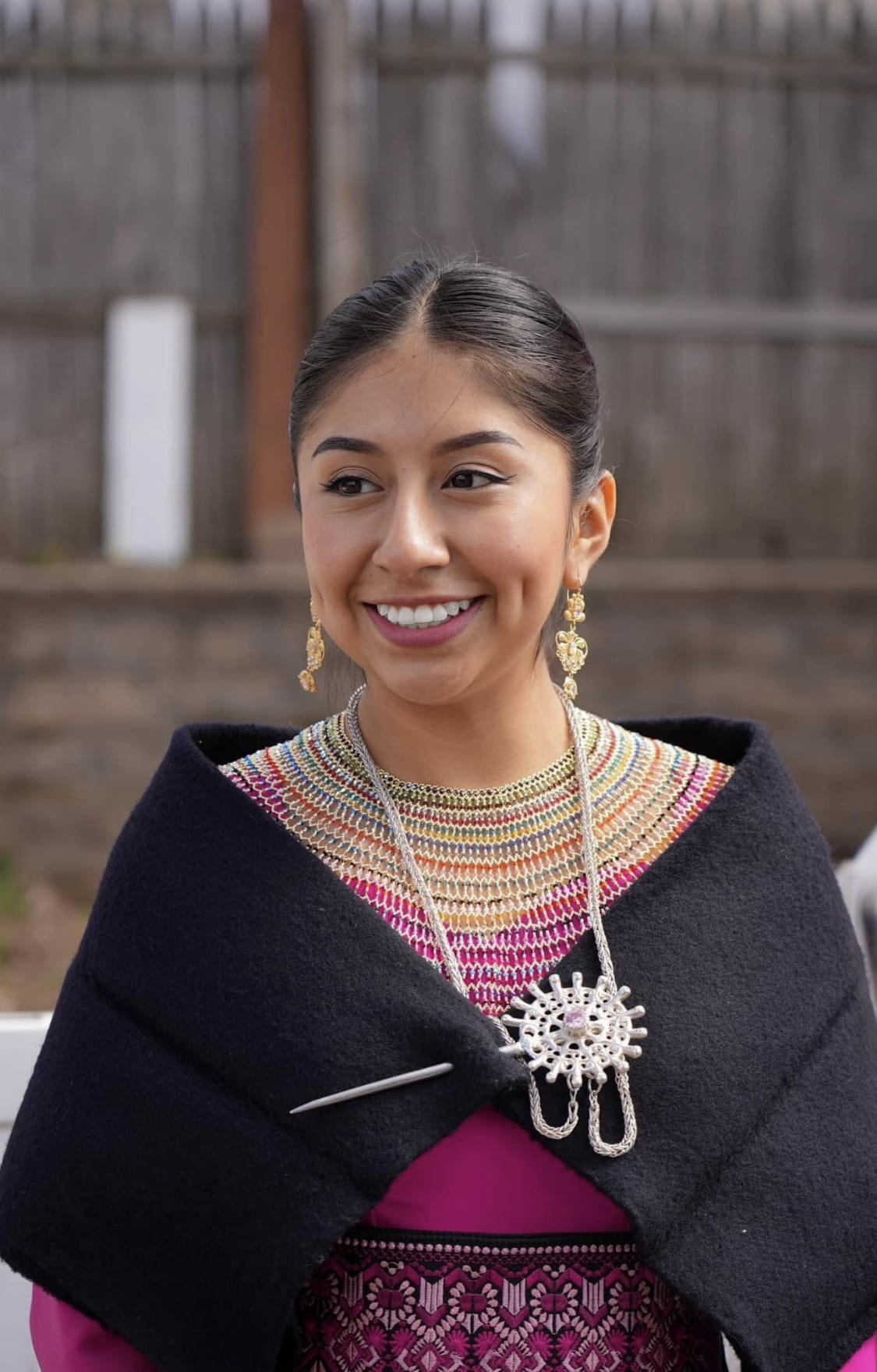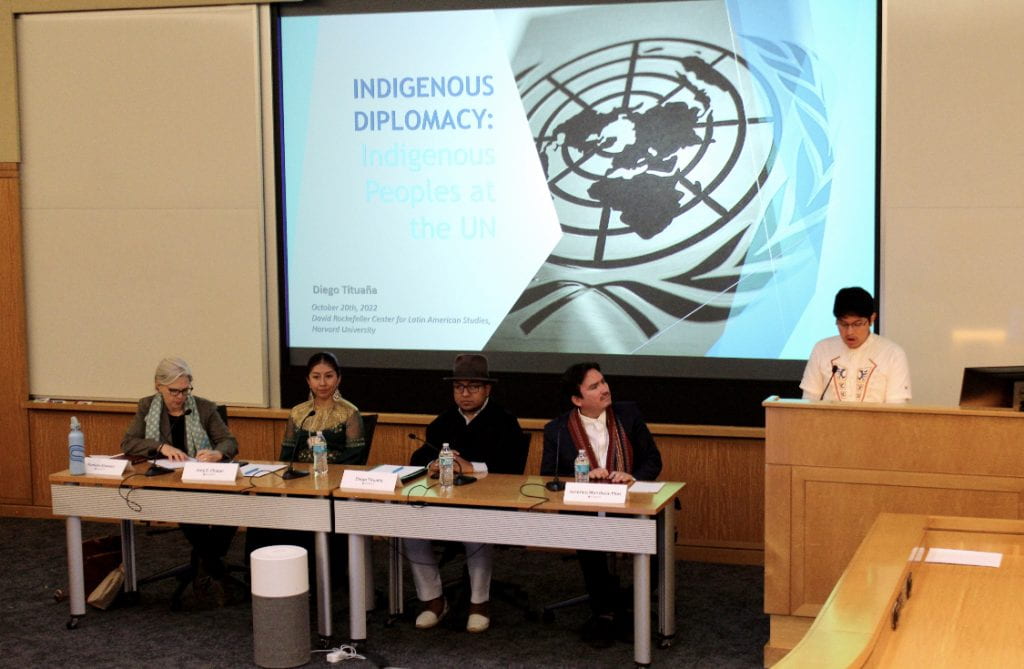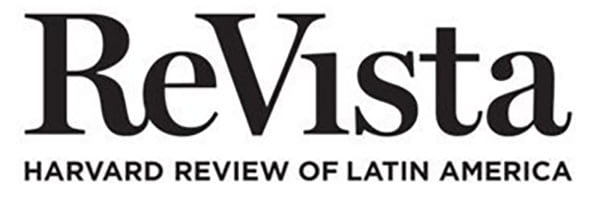
About the Author
Amy E. Chalán is a Kichwa Saraguro student at Harvard College. She wishes to thank Diego, Profe. Américo, Prof. Pamela, and everyone who made this event possible!
Indigenous Kichwa Presence at Harvard
Kichwa Otavalo diplomat Diego Tituaña visited Harvard University to discuss the promotion and protection of indigenous peoples rights at global platforms, with the goal of strengthening identity & traditional knowledge.
During the fall 2022 semester, I was invited to participate in hosting Kichwa Otavalo diplomat Diego Tituaña at Harvard for a discussion of global indigeneity at the United Nations. Besides my general excitement to share a platform with incredible scholars dedicated to the protection of Indigenous rights, I felt profoundly energized by the opportunity to meet an indigenous Kichwa relative and role model. I first met Diego when he visited Professor Américo Mendoza-Mori’s class (EMR151: Quechua, Indigenous language revitalization and Global Indigeneity) to share his experience working on Indigenous peoples rights at the UN. Diego’s openness about the visibility, role and experience of indigenous voices at a global platform captured the attention of all students in the room, who had recently engaged with reflections written by Kankana-eyleader and former UN Special Rapporteur on the rights of indigenous peoples, Victoria Tauli-Corpuz.
The next day, along with Professor Pamela Klassen, I participated as a commentator for Diego’s event on Indigenous Diplomacy at the David Rockefeller Center for Latin American Studies and felt motivated to wear my traditional clothing for the first time at Harvard. As a Kichwa Saraguro woman who grew up in the diaspora, I haven’t encountered many opportunities or spaces, outside of my Indigenous community, to showcase my heritage, let alone with a Kichwa role model in the room!
Pictured (Left to right): Dr. Pamela Klassen (William Lyon MacKenzie King Visiting Professor of Canadian Studies at Harvard University), Amy E Chalán (Kichwa Saraguro student), Diego Tituaña (Kichwa Otavalo diplomat), Américo Mendoza-Mori (Lecturer in Ethnicity, Migration, & Rights).
It was incredibly affirming to proudly wear my Saraguroclothing next to Diego, also dressed in Kichwa Otavalo vestment, and share my reaction to his presentation. In my four years at Harvard, this day stands out as a momentous occasion, in which my perspective as an indigenous wambra (youth)changed significantly as I was inspired by Diego’s suggestions for the future of Indigenous rights at the intersection between academia, grassroots activism and global concerns.
At an intimate dinner with Diego, Profe. Américo and a few other students, I spoke to Diego about my involvement in my transnational community, as Reina SarUSA. This day inspired me to take the initiative of wearing my Indigenous clothing to class once a week, which I share with my community through social media, and to begin a cultural consciousness program for Kichwa youth. I hope to carry forward these reflections and pride I feel for my Kichwa Saraguro heritage as I continue to pay it forward and share my experiences with other Kichwa and Indigenous youth.
More Student Views
The Opacity of Cuba’s La Habana Vieja
On a recent trip to Havana, two fellow visitors reminded me what it feels like to encounter the Cuban city for the first time and to become enamored with its paradoxes. The first, a young Kansan woman in my Airbnb, learning that I study Cuban architecture and urbanism, expressed a familiar curiosity about the dramatic contrast between austere 19th century mansions, colonial palaces and the surrounding blocks of ruinous buildings. The second, a Berliner, shared ceviche with me on a restaurant balcony overlooking a street bustling with tourists and art vendors. He pointed out with a laugh that our utensils came from Air France first class.
It’s Time For Women
“I believe we are in an exacerbated crisis of non-guarantee of women’s rights throughout the country, with the peculiar characteristic of finding ourselves in a moment of different rhetoric — of it being the time of women — because we now have the first woman president, seventy years after women gained the right to vote in this country,” said my interviewee, an organizer for a women’s rights organization in Oaxaca.
Amazonian Research Trip
Around the halfway point of my doctoral studies, I spent a year living between Boston and Belém in the Amazon region of Brazil to experience firsthand what I had until then been researching from satellite images and other people’s accounts. Belém became my base, from which I made frequent short excursions to surrounding areas to get a feel for life in the region. After that initial experience, I planned deeper immersions that recently brought me back for two longer field trips. This is a brief narrative of one of them.




